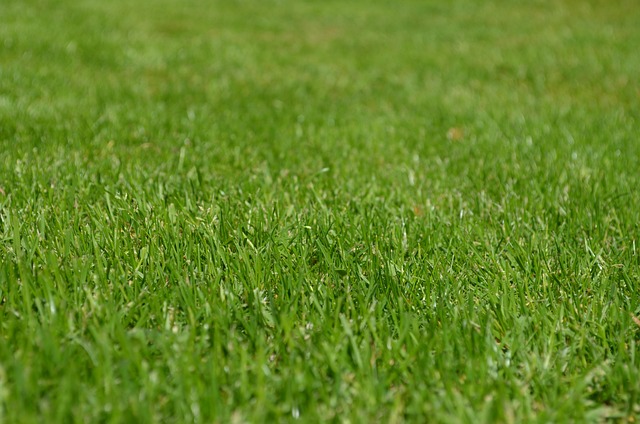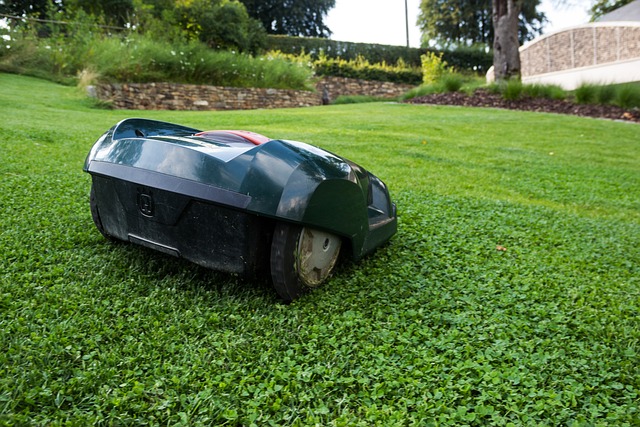Lawn care and landscaping are key to creating functional, visually stunning outdoor spaces. Lawn care maintains grass health through regular maintenance, while landscaping involves strategically placing plants, trees, and built features for aesthetic and ecological balance. Balancing creativity with functionality, consider family needs and personal style in design. Regular lawn care and meticulous landscaping practices ensure vibrant, inviting outdoor environments that enhance lifestyle and property value. This guide covers ground preparation, planting, hardscape construction, watering, and seasonal maintenance for successful results.
Transform your outdoor space into a vibrant oasis with our comprehensive guide to lawn care and landscaping. Discover the fundamentals of designing your dream yard, from balancing creativity and functionality to understanding essential lawn care practices. Then, follow our step-by-step implementation guide for a successful makeover that enhances curb appeal and creates a peaceful retreat. Unleash your inner landscape architect and watch your green sanctuary flourish.
- Understanding Lawn Care and Landscaping: The Basics
- Designing Your Outdoor Space: Creativity and Functionality
- Implementing the Plan: Step-by-Step Guide to Successful Landscaping
Understanding Lawn Care and Landscaping: The Basics

Lawn care and landscaping are integral parts of creating and maintaining outdoor spaces that are both aesthetically pleasing and functional. At its core, lawn care involves the cultivation and maintenance of grass areas, ensuring they remain healthy, lush, and well-manicured. This includes regular mowing, watering, fertilizing, and controlling weeds to create a vibrant green carpet that forms the foundation for any landscape design.
Landscaping, on the other hand, is an art form that focuses on designing and arranging various natural and built elements in a garden or outdoor setting. It involves selecting and placing plants, trees, shrubs, and flowers to create visual interest and ecological balance. Landscapers also incorporate hardscape features like patios, walkways, retaining walls, and water features to enhance functionality and add structural elements that complement the overall design. Effective lawn care and landscaping go hand in hand, as a healthy lawn provides an ideal canvas for creative landscape designs while the carefully curated landscape enhances the beauty and value of the property.
Designing Your Outdoor Space: Creativity and Functionality

When designing your outdoor space, it’s crucial to strike a balance between creativity and functionality. Start by envisioning how you want to use your lawn and landscaping to enhance your lifestyle and home aesthetics. Consider your family’s needs—do you require ample space for kids’ play or a serene retreat? Incorporate elements that cater to these desires while staying true to your personal style. For instance, a well-maintained lawn can serve as the canvas for vibrant floral beds or a soothing water feature.
Integrating functional areas with visually appealing design is key. Think about creating dedicated spaces for entertaining, relaxing, or simply enjoying nature. Pathways, patios, and pergolas not only add structural interest but also facilitate movement and create distinct zones within your outdoor realm. Regular lawn care and landscaping practices ensure these features remain vibrant and inviting, transforming your outdoor space into a versatile and engaging environment.
Implementing the Plan: Step-by-Step Guide to Successful Landscaping

Implementing your landscaping design is an exciting step, turning your vision into a vibrant outdoor space. Here’s a step-by-step guide to ensure success, focusing on both lawn care and overall landscaping:
1. Prepare the Ground: Clear the area of any debris or existing vegetation. Loosen the soil, remove weeds, and grade the land as needed to create a level surface for your design. This foundation is crucial for effective lawn establishment and long-term landscape stability.
2. Plan Planting and Layout: Refer to your landscaping plan and lay out hardscape features like pathways, patios, or retaining walls. Ensure proper spacing for plants, considering their mature sizes. Mix in organic matter to enrich the soil, enhancing drainage and fostering healthy root growth. This step requires precision, especially when integrating various plant types and structures harmoniously.
3. Planting Time: Plant trees, shrubs, flowers, and grasses according to their specific requirements. Water them thoroughly after planting to settle the roots and provide essential moisture. Regularly check for any signs of stress or pest issues during the initial growing period. Lawn care involves consistent mowing, weeding, and fertilizing to maintain a lush, healthy grass surface.
4. Install Hardscape Elements: Construct paths, build walls, or add decorative features as designed. Ensure these elements are securely in place and level. Regular maintenance, including cleaning, repairs, and seasonal adjustments, will keep your hardscape looking its best.
5. Watering and Maintenance: Establish a watering schedule suitable for your new landscape. Adjust as needed based on weather conditions and plant types. Consistent yet efficient watering promotes healthy growth. Regularly inspect and maintain your lawn and landscaping features to ensure they thrive throughout the seasons, enhancing your outdoor living space.
Landscaping design is a transformative art that combines creativity with practical lawn care and landscaping techniques. By seamlessly integrating aesthetics and functionality, you can create an outdoor space that enhances your lifestyle and adds value to your property. From understanding the basics of lawn care to designing unique landscapes and implementing detailed plans, mastering these steps will ensure a successful and satisfying landscaping journey. Remember, the right approach to lawn care and landscaping can turn your outdoor area into a vibrant and inviting sanctuary.














